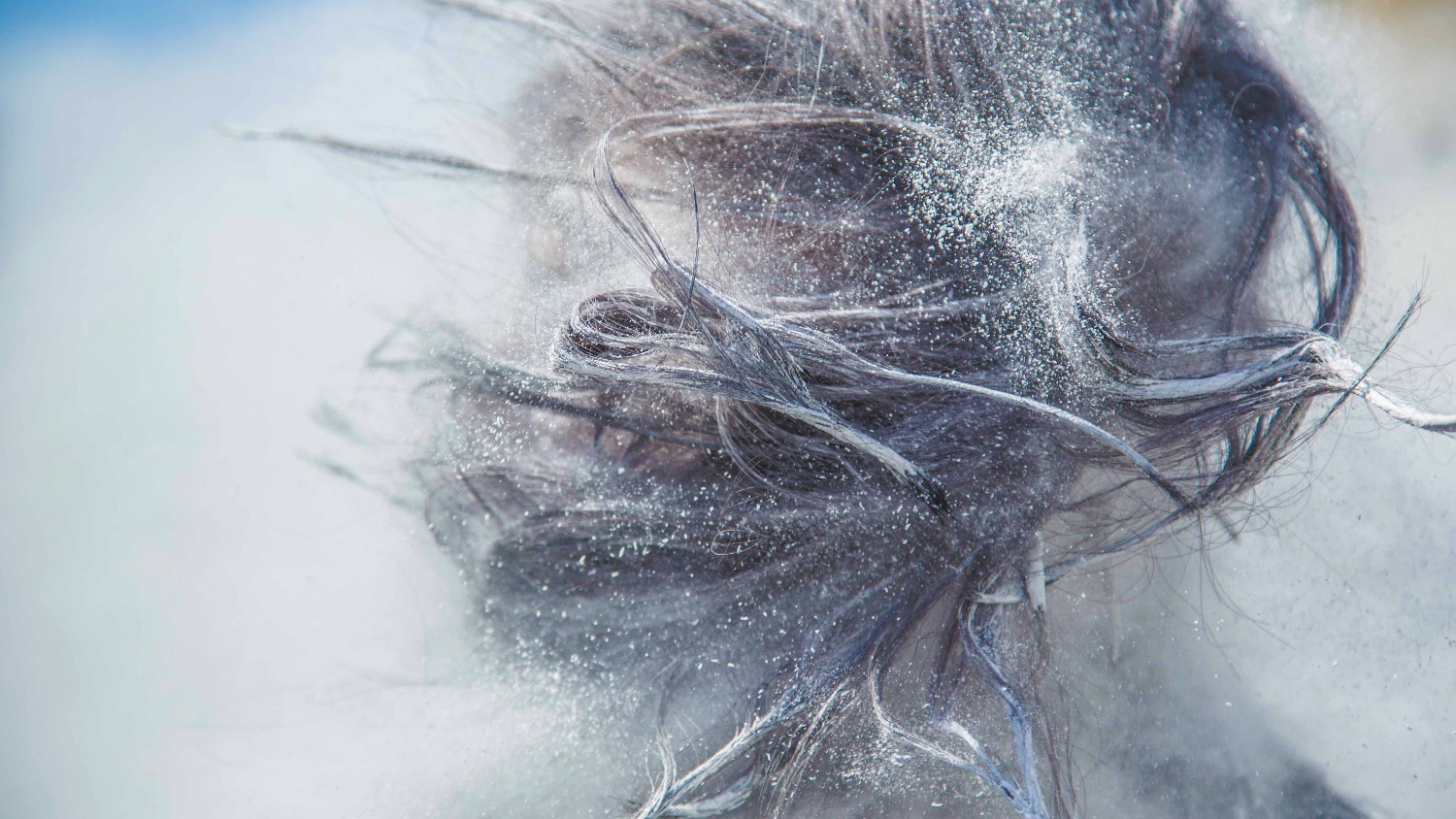For International Women’s Day, an essay by Nina Powles about Hermione Granger, feminism and searching for yourself in books.
My room at the house near the beach was small and blue. It was empty except for a fold-out bed and a desk in the corner, on top of which were my most important belongings: notebooks, scrap paper, coloured pencils, paints, and two or three Harry Potter books. Whenever we visited the house, it was like the real world disappeared out from under me. Everything there was wild and strange.
In this dream world by the sea, I was best friends with my favourite girl heroes from my favourite books: Violet Baudelaire, the Saddle Club girls, Hermione Granger.
The others came and went, but Hermione was always there. We went to the beach to collect thin pieces of driftwood that we later carved into wands. We placed them on the windowsill of my room next to other things we’d found at the beach—splintered shells, sea glass and curled bits of kelp that looked like tiny, deformed trees.

Hermione is described by the narrator and by people around her as:
bossy
know-it-all
insufferable
shrill
clever
a nightmare
Hermione has read every book in the library. She can perform complex magic far beyond her level and once received 112% on a test. She is a passionate advocate for the rights of magical creatures. She is good at being kind to those who are vulnerable or lost. She cries frequently, which makes people uncomfortable. She is often angry. She has little interest in being popular or coming across as likeable. As a consequence, she appears to have no close female friends.
Hermione was the first character I ever met who was deeply, unapologetically herself.
Hermione was the first character I ever met who was deeply, unapologetically herself. But despite her complexity, despite how important she is to the series, it was not always enough. If you’re getting to know a teenage girl through the eyes of a male narrator, you’ll never know what her inner life is really like.
I wanted to know what it felt like when she discovered she was a witch, when she learnt for the first time why strange things kept happening around her that she couldn’t control, which was frightening because she couldn’t find an explanation in any book. I wanted to know when she got her first period, if it happened at school, if there was someone she could tell straight away or if she went back to class and acted as if nothing had happened. Maybe there were times when she felt homesick and had a mental list of things she could do to make herself feel better, like listen to music or paint her nails or go for long walks in the snow. Maybe she always took the same route through the castle after studying late at the library so that she could linger near the tall windows, looking at the reflection of the moon on the lake.

Another word that becomes associated with Hermione as the series progresses is
mudblood
which reminds me of the Chinese word for someone of mixed racial identity: 混血 hùnxuè, which literally means ‘mixed blood’. I first heard it on a street in Shanghai when I was thirteen, murmured by a passerby who looked at my dad, looked at my mum, then looked at me.
Unlike hùnxuè, ‘mudblood’ is a derogatory word, a slur. It refers to witches and wizards with non-magical parents who are deemed by ‘blood purists’ to be inferior and a threat to wizarding kind. Hermione’s parentage makes her a target of discrimination and sometimes violence, especially in the later books, not just because she is a ‘mudblood’ but because she is a woman.
But how useful are these allegorical symbols, these evil villains whose language and tactics deliberately mirror those of white supremacy, when all your main characters are white?
It wasn’t until later in high school that I read a novel with an Asian protagonist, and I’ve still never read a book with a mixed race one like me.
‘Brown eyes, frizzy hair and very clever. White skin was never specified,’ J.K. Rowling tweeted on 21 December 2015, responding to racist criticism of the casting of Noma Dumezweni as Hermione in the play Harry Potter and the Cursed Child.
Rowling means well; she welcomes the idea that her readers might have imagined Hermione differently to how Warner Bros did in the films. But it’s difficult to believe that not specifying Hermione’s exact skin colour was a deliberate decision aimed at racial diversity. When we do meet non-white characters in the series, they are almost always specifically coded as non-white, either through their names or through their physical appearance: Angelina Johnson’s long braids, Cho Chang’s shiny black hair.
I come from a bicultural family, which means that in order to identify with my favourite characters I have to erase certain parts of myself. You get so used to reading books about white people that when skin colour is never specified, white is the default assumption. White is the ‘normal’ against which everything else is measured. It wasn’t until later in high school that I read a novel with an Asian protagonist, and I’ve still never read a book with a mixed race one like me.
If I erase certain parts of myself, Hermione could almost look like me. With her brown eyes and uncontrollable hair.

The word used most often to describe Hermione’s hair in the books is not actually ‘frizzy’ but ‘bushy’. Her hair is so intrinsic to who she is that when she changes it for the Yule Ball in Harry Potter and the Goblet of Fire, she becomes unrecognisable. ‘But she didn’t look like Hermione at all. She had done something with her hair; it was no longer bushy, but sleek and shiny, and twisted up into an elegant knot at the back of her head.’ After the Yule Ball, during her argument with Ron, she cannot contain her rage. Strands of hair come loose and fall in front of her face as she blinks back tears.
Like Hermione, I am a person who cries easily. In wintertime a man takes me on a first date to a movie called She’s Beautiful When She’s Angry. We drink hot chocolates in a café afterwards. A few weeks later he says my feminist views are ‘a little too much’ and we get into an argument in my kitchen. Soon the rage becomes blinding. There is a feeling of something pressing down on my chest, squeezing my lungs, and then I can’t speak anymore because if I open my mouth I’ll start to cry. I blink and swallow. I am quiet, so he thinks he’s won.
Hermione’s anger often comes across as ridiculous, comical and slightly frightening. This is because we cannot see inside it. In Harry Potter and the Half-Blood Prince, the book in which Hermione cries most frequently, we see an upset Hermione sitting in an empty classroom, a flock of little birds that she has just conjured circling above her ‘so that she looked like a strange, feathery model of the solar system.’ She speaks with an unnatural calm in her voice, then suddenly sends the birds flying at Ron’s face, ‘clawing at every bit of flesh they could reach.’
In an alternate universe we are standing in the same kitchen on the same afternoon having the same argument. I am so angry my hands begin to shake. Suddenly the lights flicker, interrupting him. The windows vibrate, a wine glass slips off the shelf and shatters on the bench. He jumps in fright and looks at me, wide-eyed. I have not yet learnt to control it.
I am so angry my hands begin to shake. Suddenly the lights flicker, interrupting him.
*
When I was twelve we moved to a different country and in those first weeks at my new school, I wished I could make myself invisible. It was around then that I started writing in earnest: long chapters of fanfiction that I posted on online forums. It was the heyday of Harry Potter fanfic, the three or four year period leading up the 2007 release of Harry Potter and the Deathly Hallows when readers who had grown up with the first few books were just hitting their teens.
At first I wrote stories about Harry falling in love with an imagined third best friend, a smart girl with dark hair who didn’t cry as much as Hermione. Soon this unnamed character stopped being Harry’s love interest and started being Hermione’s friend.
In my imagination they stayed up late in their dorm room reading aloud passages from A History of Witches & Witchcraft. They hid in the girls’ bathroom at lunchtimes and lay outside on the grass in summer, laughing and casting charms to make squares of paper fold themselves into origami butterflies that flew around their heads.
In Harry Potter and the Deathly Hallows, the trio leave school and go on the run. Hermione plays a key role in their quest while also acting out the role of mother to two 17-year-old boys. She does their laundry, packs their belongings, heals their injuries. Throughout their fugitive existence, the rare moments of calm and normalcy are centred around her domestic tasks: Hermione making cups of tea, Hermione cooking Spaghetti Bolognese, Hermione conjuring hot blue flames inside a glass jar to keep them warm.
Hermione is eighteen at this point. She is no longer a student but is suddenly a member of the resistance, a wanted fugitive. She has not only left home but has erased all traces of herself from her parents’ memories in order to keep them safe. In preparation for the journey, she has taught herself complex defensive spells and read every book on Dark Magic that she could find. She has had everything packed for days, ready to go on the run.
we are the granddaughters of the witches you weren’t able to burn
Feminists first held up placards and banners bearing these words at protest marches across the United States in the 1960s and 70s. On 21 January 2017, one day after the inauguration of President Donald Trump, several images circulated on social media of women holding up this same sign at Women’s Marches all over the world. One picture, taken in downtown Los Angeles, shows a young woman with curly dark hair holding a pink sign with the words painted in black. Her expression angry, her fist in the air, her mouth open mid-shout.
*
It’s not her turn to keep watch tonight so she’s meant to be getting some rest. She sits on her bed eating the last of their stash of chocolate bars and trimming her split ends. The only sounds are an owl hooting outside the tent and one of the boys snoring from the bunk above; the only light, the soft blue glow of flames inside a glass jar. They have no idea how long they’ll be here but she’s tried to make it feel like home. A stack of books at the foot of her bed, a few objects laid next to her sleeping bag: a misshapen shell with blue ridges along the edge, a strange-looking coin, an origami butterfly. She can’t sleep so she gets to work. Every night she practices complicated spells that will help them survive: incantations that render them invisible and untraceable, spells that help wounds heal faster. She works late into the night, a spellbook open in her lap.
Nina Powles
Nina Powles is a writer from Wellington. She holds an MA in Creative Writing from Victoria University and was the 2015 winner of the Biggs Family Prize for Poetry. Her work has recently appeared in Mimicry, Scum and Shabby Doll Houseas well as several self-published poetry zines. Her debut poetry book, Luminescent, was published in August 2017. She is half Malaysian-Chinese and currently lives in China.
Blog: dumplingqueen.weebly.com
Website: ninapowles.weebly.com



